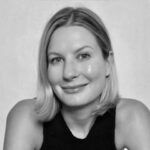The traditional custodians have a deep connection to the land.
Author | Carmelle Wilkinson
While land is viewed as a valuable commodity in western society, to the traditional custodians of this country their relationship to land runs much deeper – dating back almost 60,000 years.
To them, land is so much more than soil, rocks or minerals. It is part of their physical and spiritual experience, and fundamental to their identity.
Encompassing all aspects of life including culture, family and law, Indigenous people understand that land sustains and therefore must be sustained and cared for in return.
Because of this deep connection to Country, when land is disrespected, damaged or destroyed, it can create much heartache and concern for Aboriginal and Torres Strait Islander people.
Just as the pyramids are significant to the Egyptians, certain sites such as hills, rock outcroppings, gorges, trees and waterways hold sacred significance for Indigenous Australians.
According to Aboriginal beliefs, disturbing these sites through mining, construction or urban development can bring unwelcome consequences to those involved and agitate Spirit Ancestors resting there.
New heritage laws passed through the WA House of Parliament last year aim to protect sacred sites, taking into consideration Indigenous voices and their vast environmental knowledge and cultural awareness. Revised following the destruction of Aboriginal heritage sites at Juukan Gorge in Western Australia’s Pilbara in 2020, the Aboriginal Cultural Heritage Act 2021 helps guide the future of mining in WA from an Indigenous perspective.
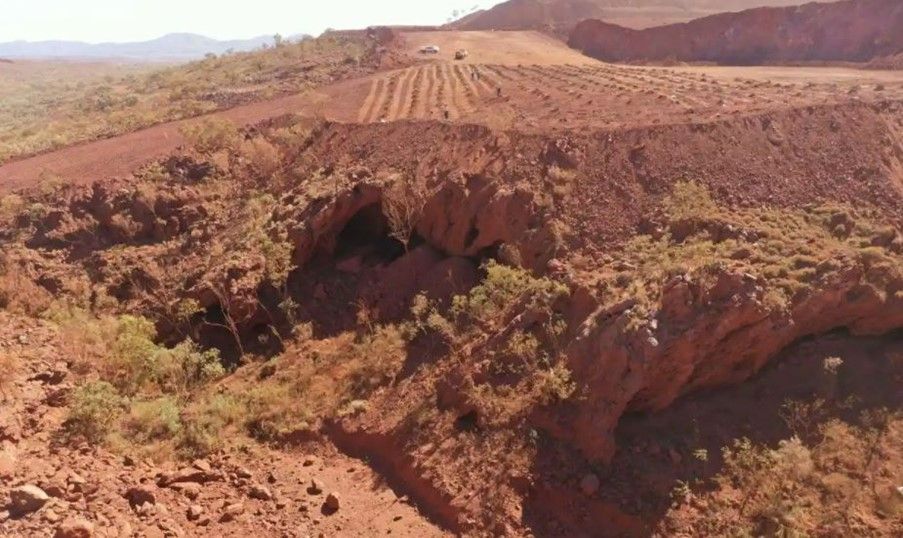
In May 2020, rock shelters of cultural significance at Juukan Gorge in the Pilbara were destroyed.
The new laws recognise the importance of conservation, protection and preservation of one of the oldest known civilisations in the world and includes meaningful consultation with original custodians for all activities that may impact their cultural heritage.
However, final decision-making powers on whether a site can be destroyed for development currently rest with the Minister for Aboriginal Affairs, a decision that has been met with heavy criticism from the Aboriginal community.
Mounting pressure to involve Indigenous culture and expertise in the future of mining is being felt across various sectors, with many calling for greater engagement and stronger partnerships with the traditional owners of the land.
Conservation
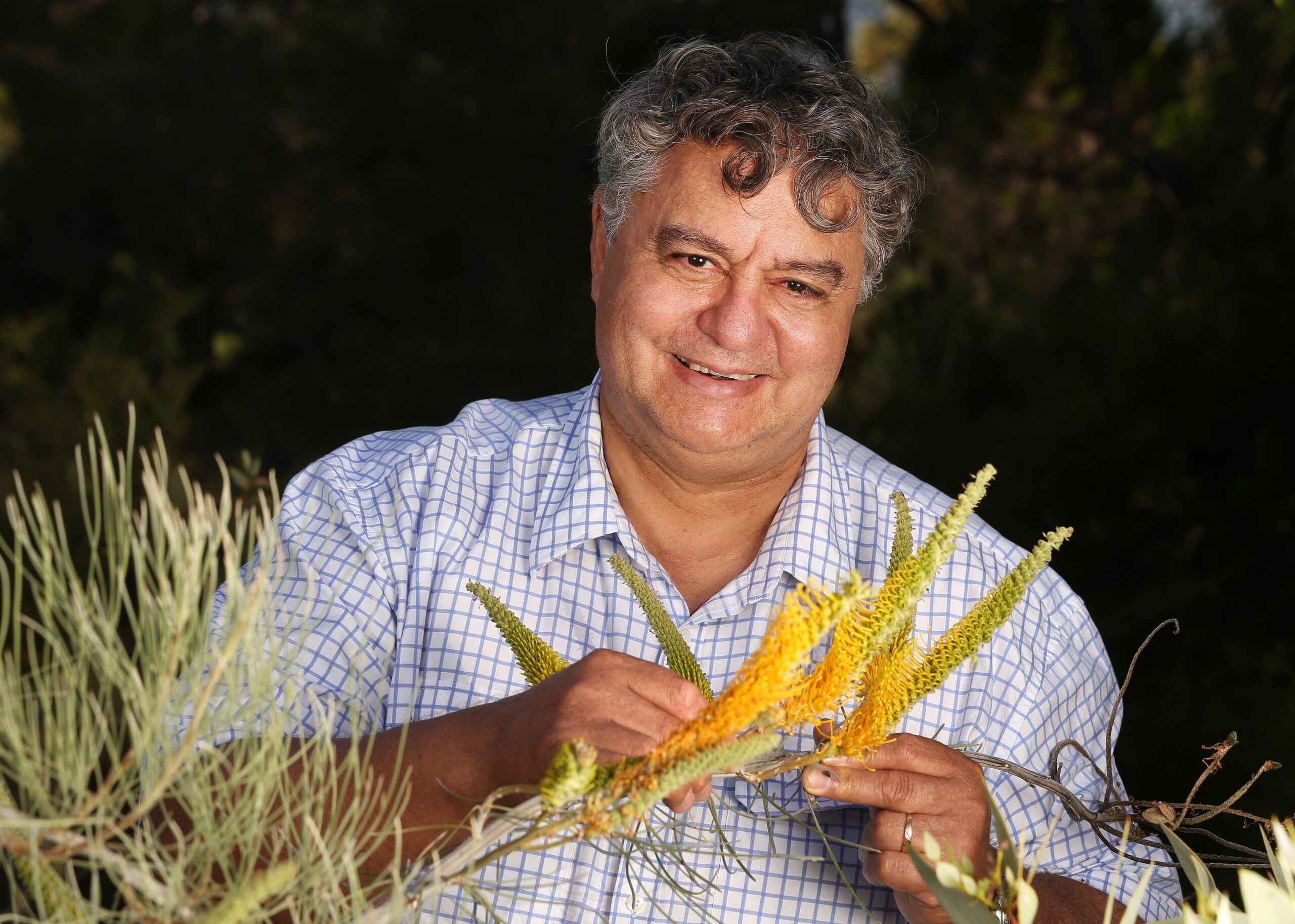
Curtin Professor Stephen van Leeuwen says stronger dialogue between developers and Indigenous communities is needed to ensure painful mistakes from the past are not repeated.
Curtin’s BHP Indigenous Professor in Biodiversity & Environmental Science Stephen van Leeuwen is a firm advocate for change.
He believes changes to the previous heritage act were not only welcome, but necessary, and feels more can be done to ensure Indigenous voices in mining are heard.
“What happened at Juukan Gorge was incredibly unfortunate and sadly it’s not an isolated case,’’ Professor van Leeuwen said.
“Other culturally significant sites in the Pilbara have been lost forever, whether it’s through urban development, construction or mining, and the time has come for better communication between our decision makers and the people who own the land.
“There needs to be greater conversation to empower and protect culturally significant sites, assets and values. Some of these sites of significance in Australia date back tens of thousands of years, and they should be a matter of national priority.”
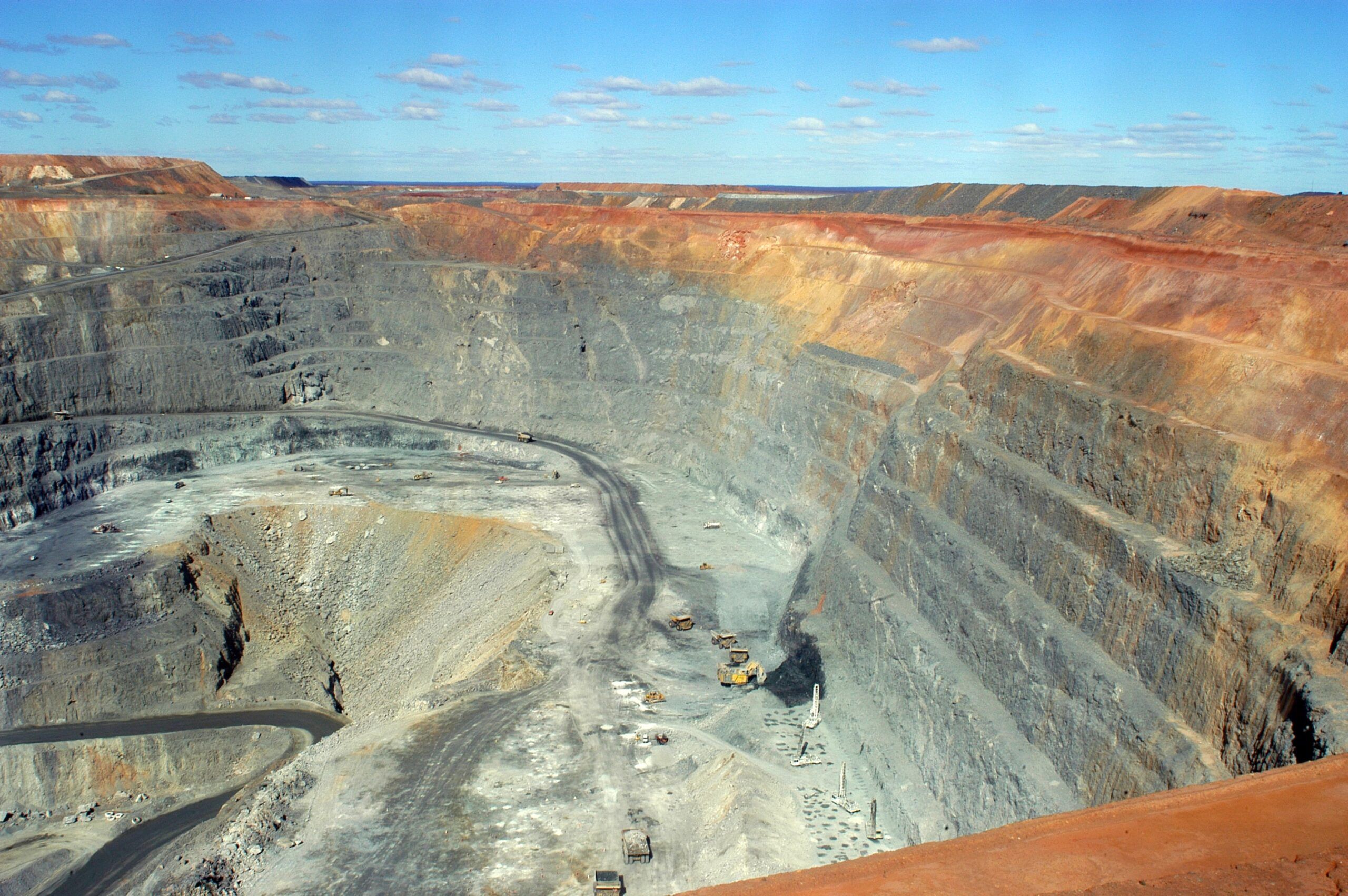
Prior to projects being approved, Professor van Leeuwen would like to see both Indigenous and non-Indigenous parties working alongside one another to deliver co-designed and co-delivered research which respects native titles.
“This involves sitting down together and having lots of cups of tea, and not just once but throughout the duration of the project and beyond,’’ he said.
“How much involvement the mob has with Country is a challenging issue now, and while some say the laws are a good start, others say it’s not enough.
“In my opinion more can always be done. We should be reviewing this act and working with the mob throughout the journey and not just at the start and towards the end. It’s a process that needs to occur throughout the lifecycle of the project.”
Looking ahead, Professor van Leeuwen believes stronger dialogue between developers and Indigenous communities is needed to ensure painful mistakes from the past are not repeated.
“Enabling generational knowledge transfer isn’t always an easy task, given a vast amount of knowledge is passed down verbally through the mob rather than being recorded in written form,’’ he said.
“So, opening the lines of communication allows Elders to share culturally sensitive knowledge and creates a safe space where both parties feel empowered and equipped to make the right decisions about the land.
“We’ve come a long way in the last 40 years of mining, but there is still a way to go. I’m hopeful things are changing for the better and with the right lines of communication, education and respect, we can get there.”
Industry
Curtin graduate Allan James (BA Commerce, 2001) is a Wongi/Martu/Yamatji man born and raised in the northern goldfields of Western Australia. He is a Tjiwarl Native Title holder and up until recently a member/director of the Tjiwarl Aboriginal Corporation Prescribed Body Corporate, a position he held since 2017.
Passionate about changing the dialogue for Aboriginal Australians, Allan has spent the last 20 years of his career engaging with traditional owner groups and industry around land access, heritage comprehension and economic development pathways.
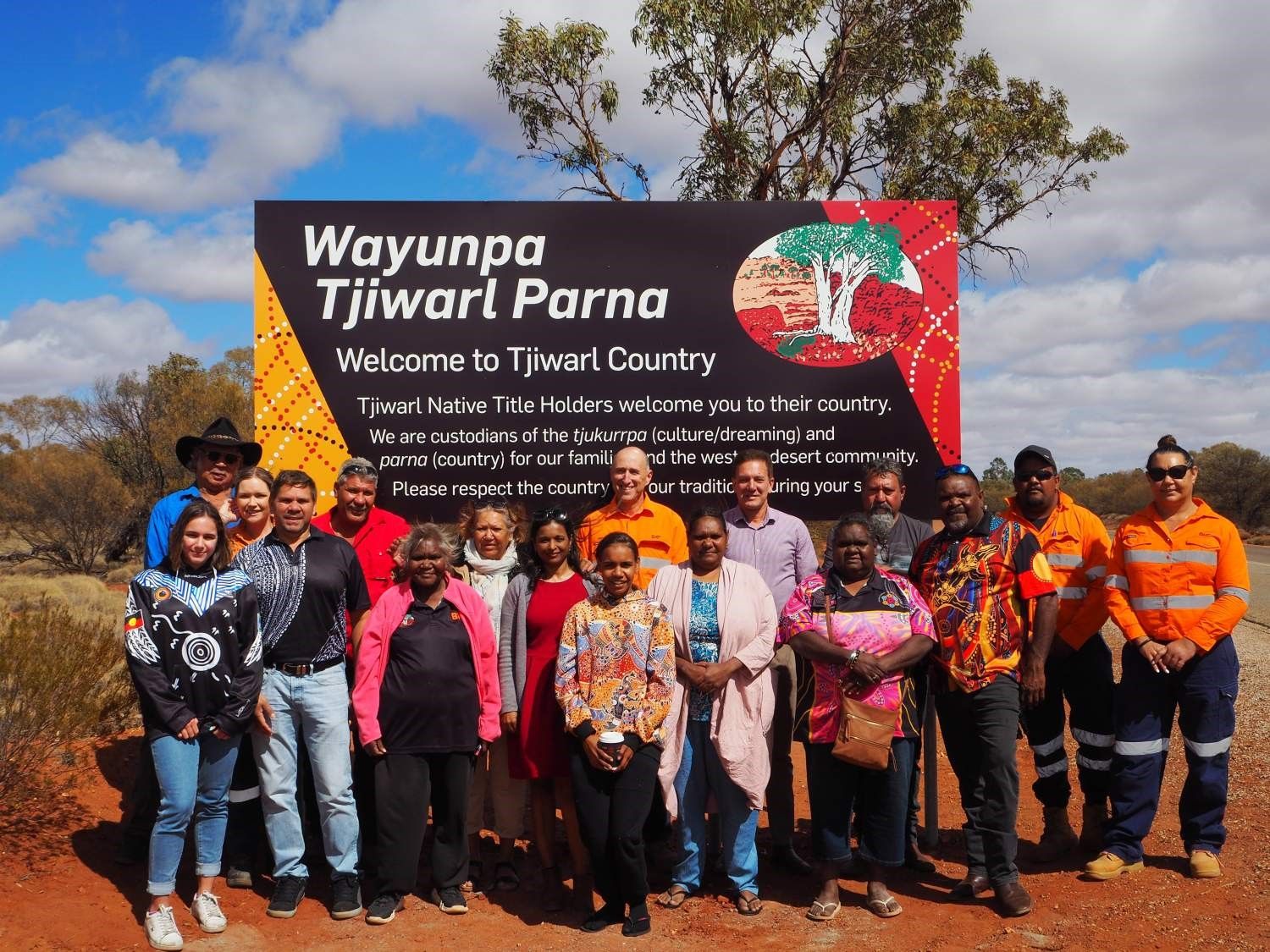
Allan James (front row second from left) at the unveiling of welcome to Country signage at Leinster, BHP Nickel Operations.
With an extensive history in the mining industry, Allan has previously worked with Rio Tinto at Argyle Diamonds, BHP Billiton Nickel West and Newmont Boddington Gold.
He was also Chief Executive Officer for eight years at the Carey Group – the largest Indigenous owned and operated civil and mining business in WA and was an active board member for several Native Title bodies.
Currently Head of Indigenous Engagement at BHP, Allan is committed to improving communication between Aboriginal communities and mining giants.
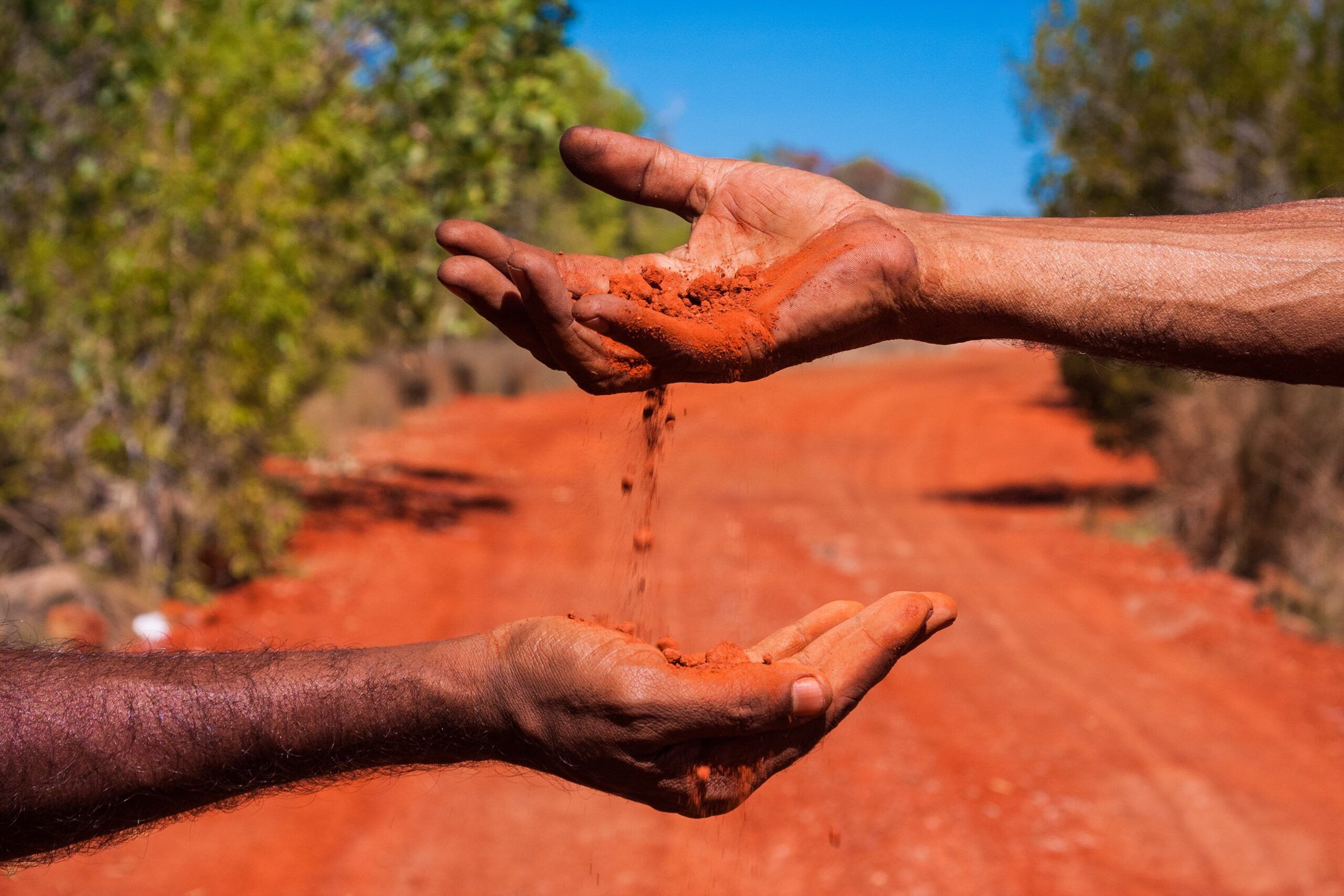
Indigenous people understand that land sustains and therefore must be sustained and cared for in return. (Shutterstock image)
“Helping give Indigenous people a voice is a significant part of my role. It’s critically important they are included in the conversation,’’ he said.
“It is the cornerstone of how BHP engages with Indigenous groups and Traditional Owners and critical to our success. We are currently in the process of reinvigorating our Reconciliation Action Plan and listening to and hearing the voices of our Indigenous stakeholders.
“Mining and cultural heritage can find a way to coexist, but we need to give that relationship a strong foundation. While this relationship has shifted and grown over the years, it is still a work in progress.”
Growing up in the heart of WA’s mining industry, Allan said it wasn’t long before he was filling entry level jobs to help fund his university degree.
“My interest in the mining sector was a natural progression, you could say. It’s hard to grow up in the Goldfields region of Western Australia and not be exposed to mining. But it wasn’t until I was in the industry that I discovered my real passion. As an Indigenous man I wanted to be an advocate to create better relationships between the mining sector and Aboriginal groups. I wanted to be part of creating positive change,’’ he said.
“Closing the gap between industries like mining and the local Indigenous community can also be achieved by encouraging Indigenous people and creating a pathway for them to take up senior management roles within the sector.”
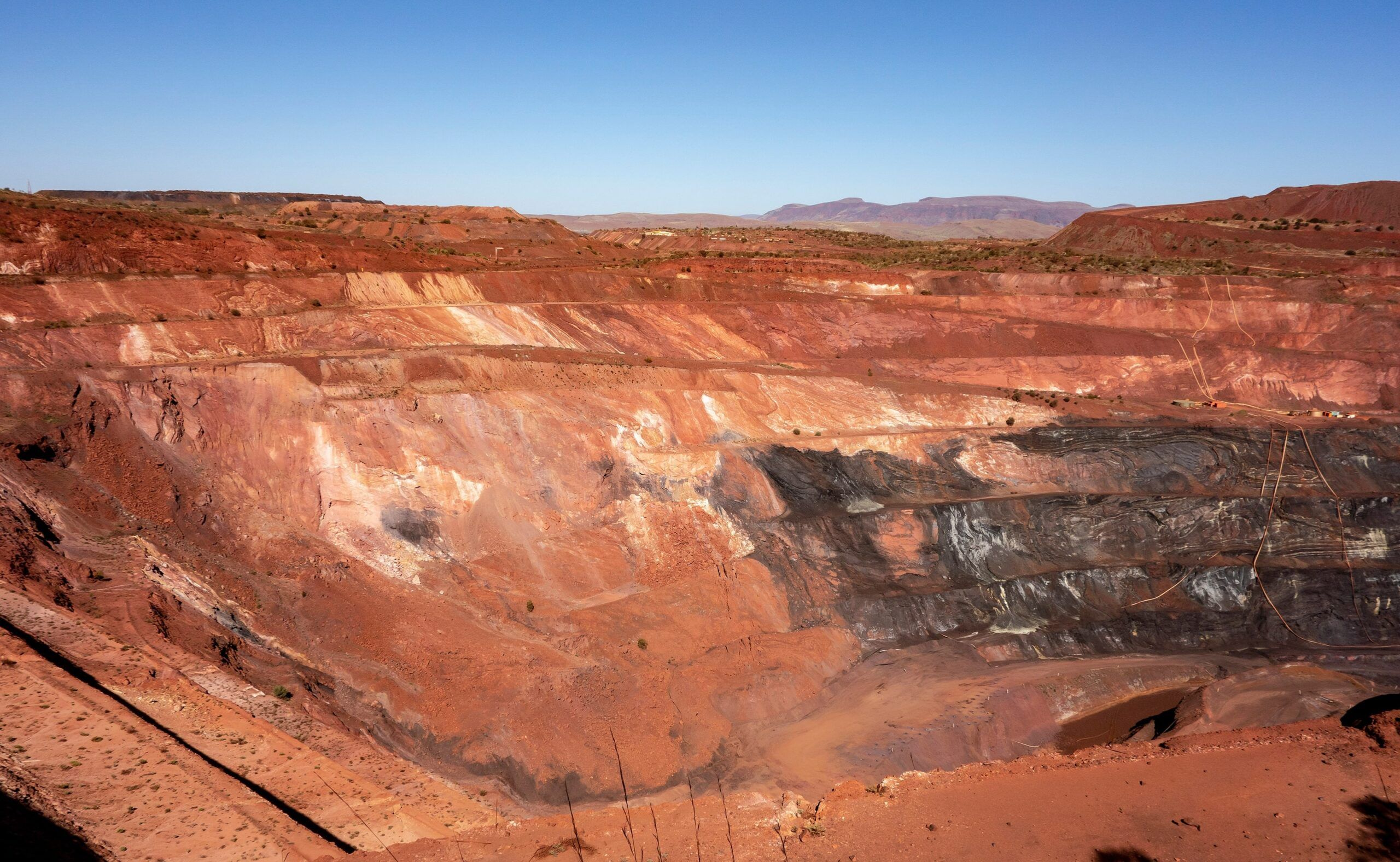
Iron ore mine in Pilbara region, Western Australia.
Allan said in the last decade there had been elevated promotion and education around cultural awareness and appreciation of what land means to our local Traditional Owner stakeholders.
“Culture, heritage, Tjukurrpa are critically important and intrinsic to the individual and my community. I’ve accompanied senior BHP members out to Country to impart knowledge and explain what the land means to us – because it is a finite resource and once it’s destroyed from a cultural perspective it’s gone forever,’’ he said.
“For me personally the time I spend with my kids on Country is so special, because I can pass on my knowledge to them. It’s also an opportunity for me to listen and learn from my elders. Country is the only place I can go back to and feel part of the environment and landscape. It’s where I can escape the pressure of life and feel one with the land.”
Allan said honouring this reciprocal relationship with the land was central to Indigenous culture and essential to the future of mining.
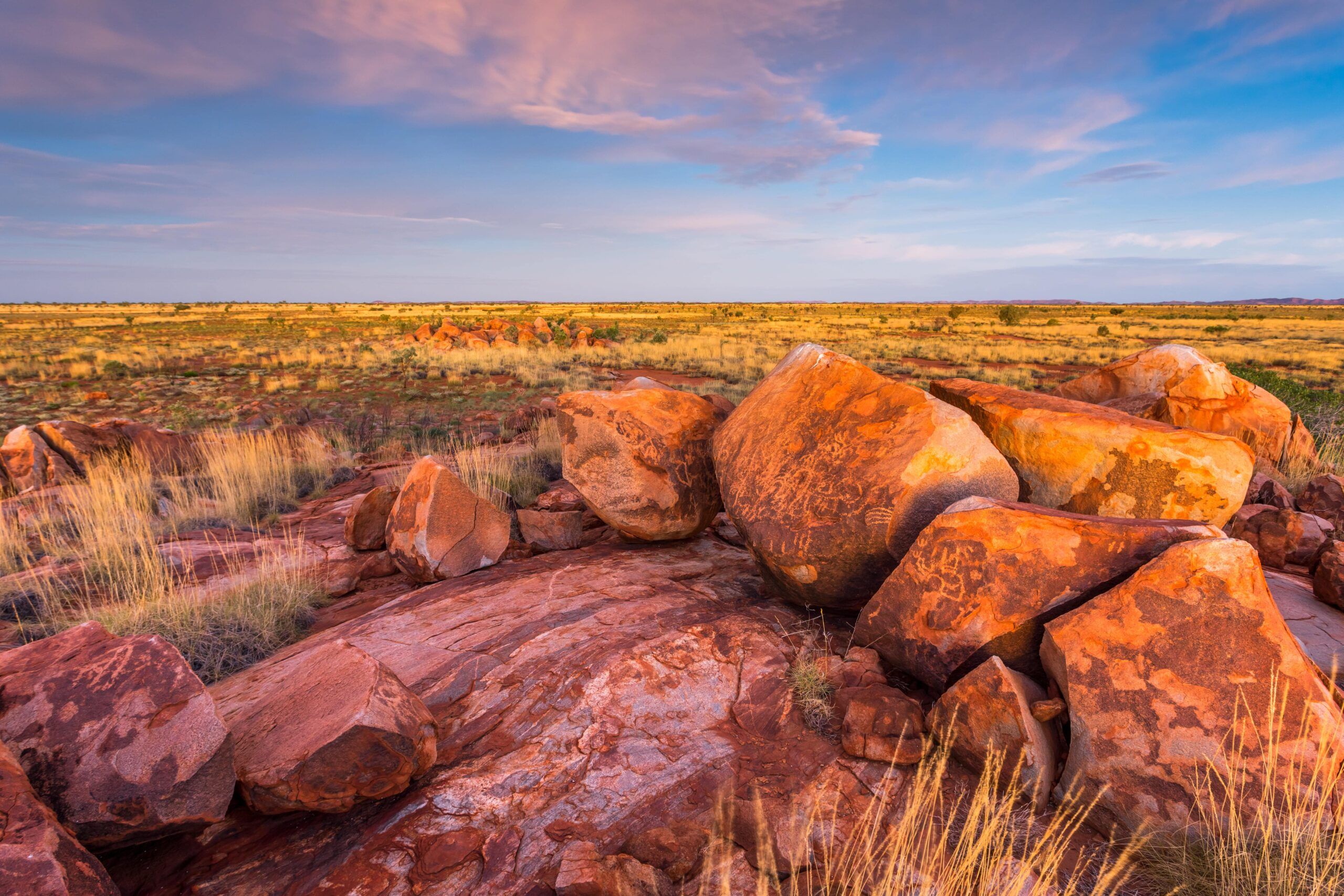
Traditional custodians feel at one with the environment and the WA landscape.
On an industry level, Allan said there was always room to improve communications between mining companies and Aboriginal communities.
The combined voices of First Nations Australians working within the sector and those on the periphery were critical to success. As an industry we need to change the dialogue and part of that change is having enough Indigenous voices in key leadership roles and positions of authority to reflect the dynamic environment that currently exists.
“This can be achieved through greater exposure, awareness and appreciation of culture. The facilitation of business development opportunities and employment programs offering entry level jobs, cross cultural programs, mentoring and through maximising employment opportunities to ensure Indigenous people have a long career in the mining sector,’’ he said.
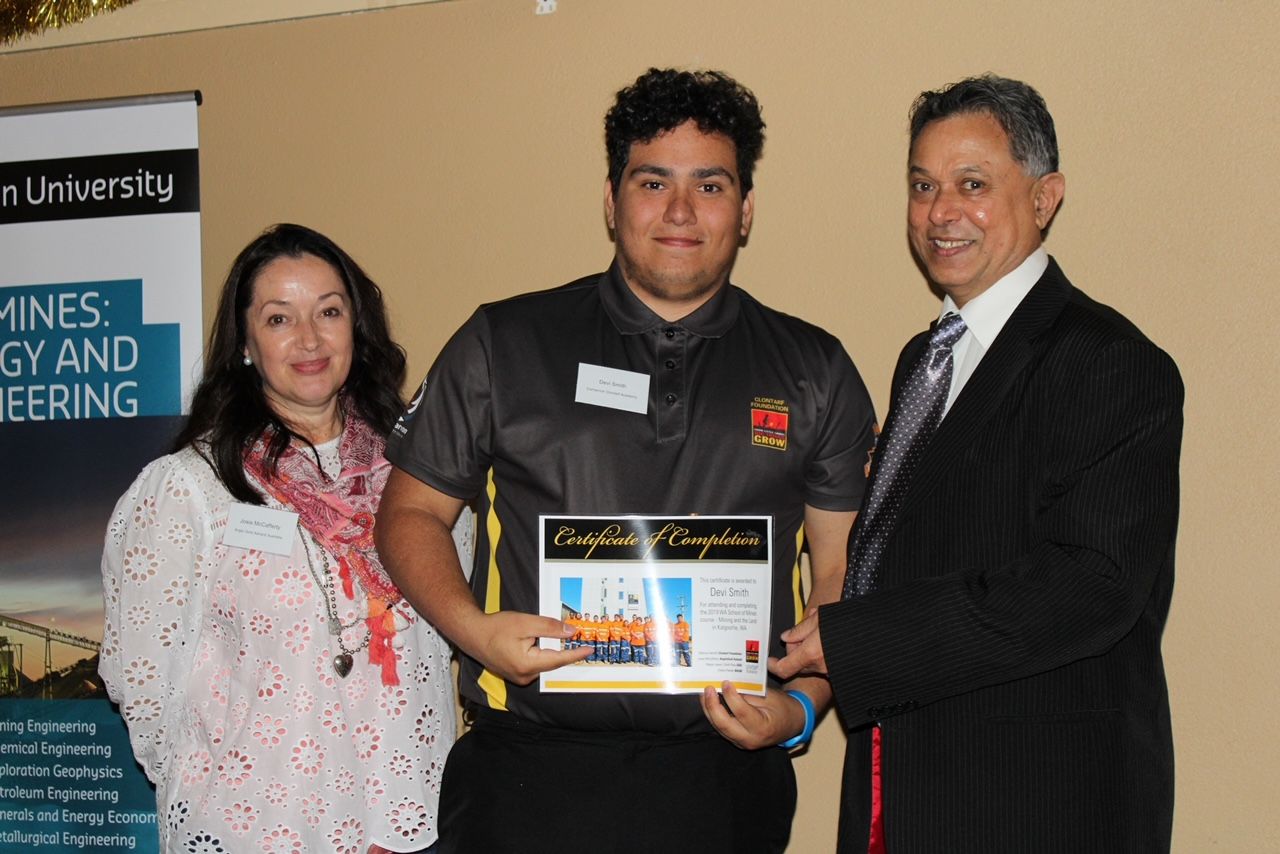
Josie McCafferty (Community & Land Access at AngloGold Ashanti) Keith Ross (Ross Mining) and student Devi Smith receiving his certificate of attendance for the Carnarvon Clontarf Academy.
Principal at Ross Mining, Keith Ross (BSc WASM Mining Engineering) is another strong supporter for attracting Indigenous voices to mining.
With a focus on students, he founded the Indigenous Students Action Group and together with Emeritus Professor Odwyn Jones they created Mining and the Lands STEM program – a camp for Indigenous students in Years 10, 11 and 12 interested in science, maths or engineering.
A joint initiative between the Clontarf Foundation, AngloGold Ashanti Australia and Curtin University, Mining and the Lands attracts Indigenous students to a career in mining.
“The camps not only attract young Indigenous students to study at Curtin’s WA School of Mines and pursue a career as an engineer or geologist, it also opens their minds to the possibility of joining the decision-making table and having a voice in mining.
“When we attract more Indigenous voices to mining, we acquire a greater understanding of how everything works and what’s important. Sometimes, when there’s a conflict with the land or with your governing bodies and sacred sites, they can prove highly valuable in navigating safely through these challenges.”
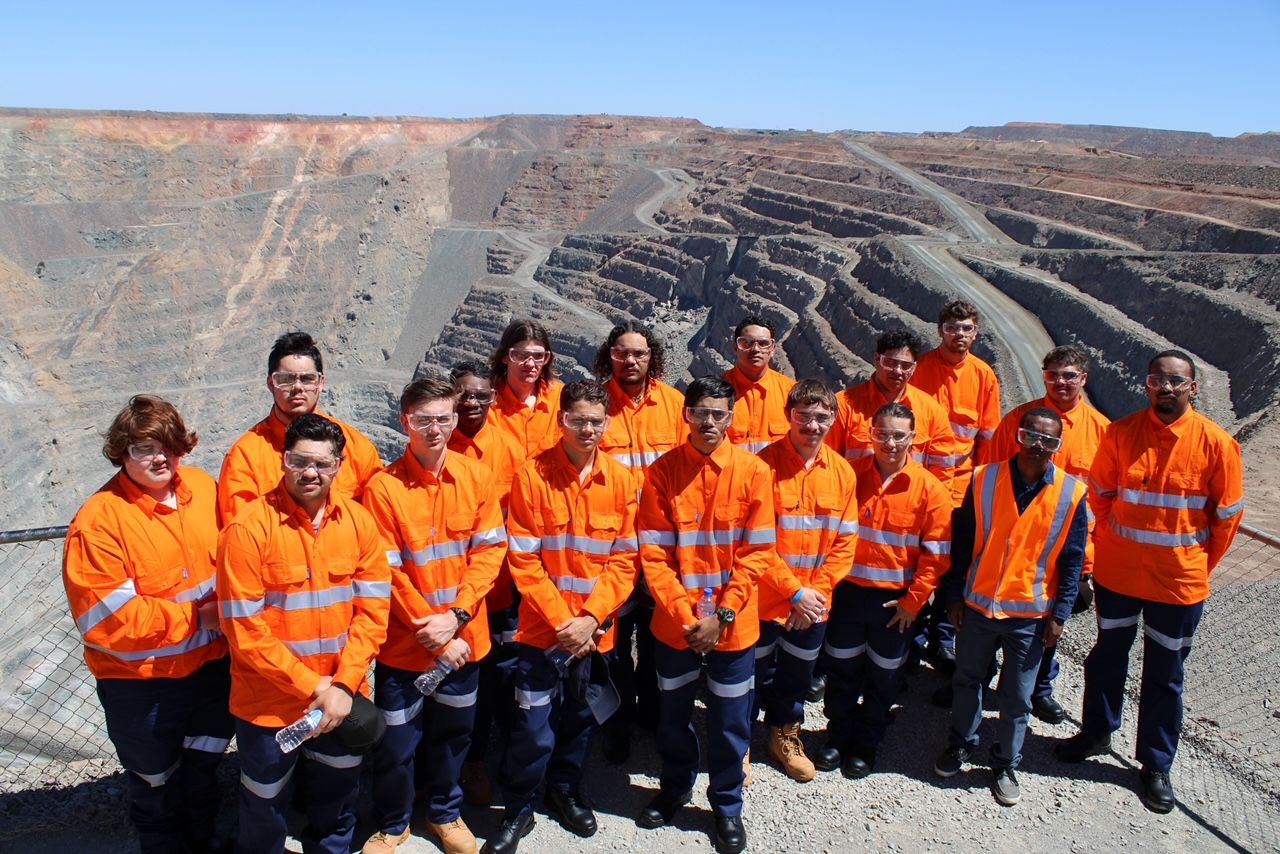
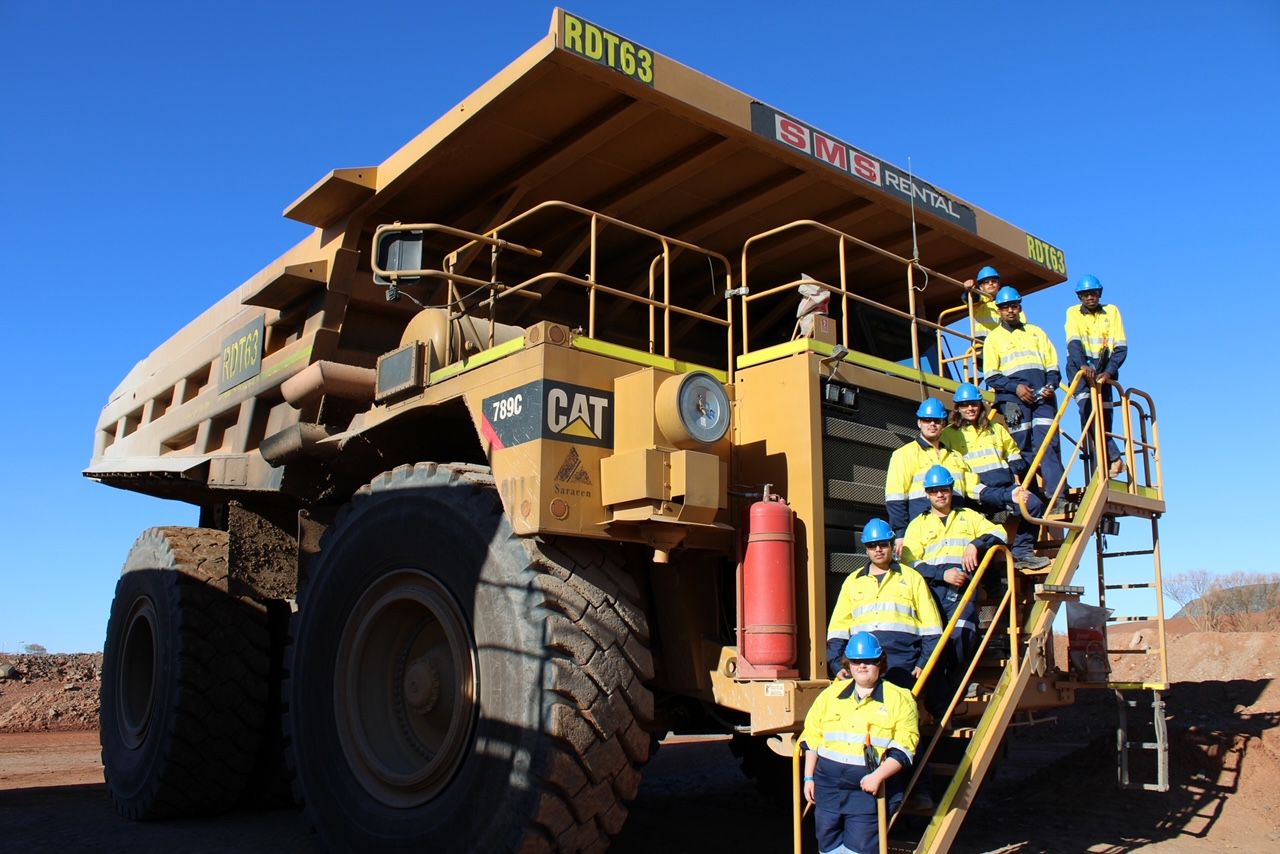
Mining and the Lands tour to iron ore mine site in WA’s north.
Now in its fourth year, Keith said the camps gave students an insight into studying and working in the mining and resources sector in WA.
“There’s opportunities to tour mine sites, participate in hands-on workshops and hear from industry leaders,’’ he said.
Born in India, Keith migrated to Australia with his family in the late 1960s.
What began as a love for rocks when his was younger, led to a scholarship to study at the Western Australia School of Mines in Kalgoorlie.
This proved to be Keith’s stepping stone to a successful career in the mining industry, which has now spanned over 30 years.
Having worked at several mining sites across WA, including BHP Mining Newman and as mine manager at Marvel Loch for about 10 years, Keith was also the Australian operations manager for Troy Resources Ltd, which included the Sandstone mine, and has held managerial positions in Argentina and Brazil.
Keith believes education is fundamental to WA’s way forward.
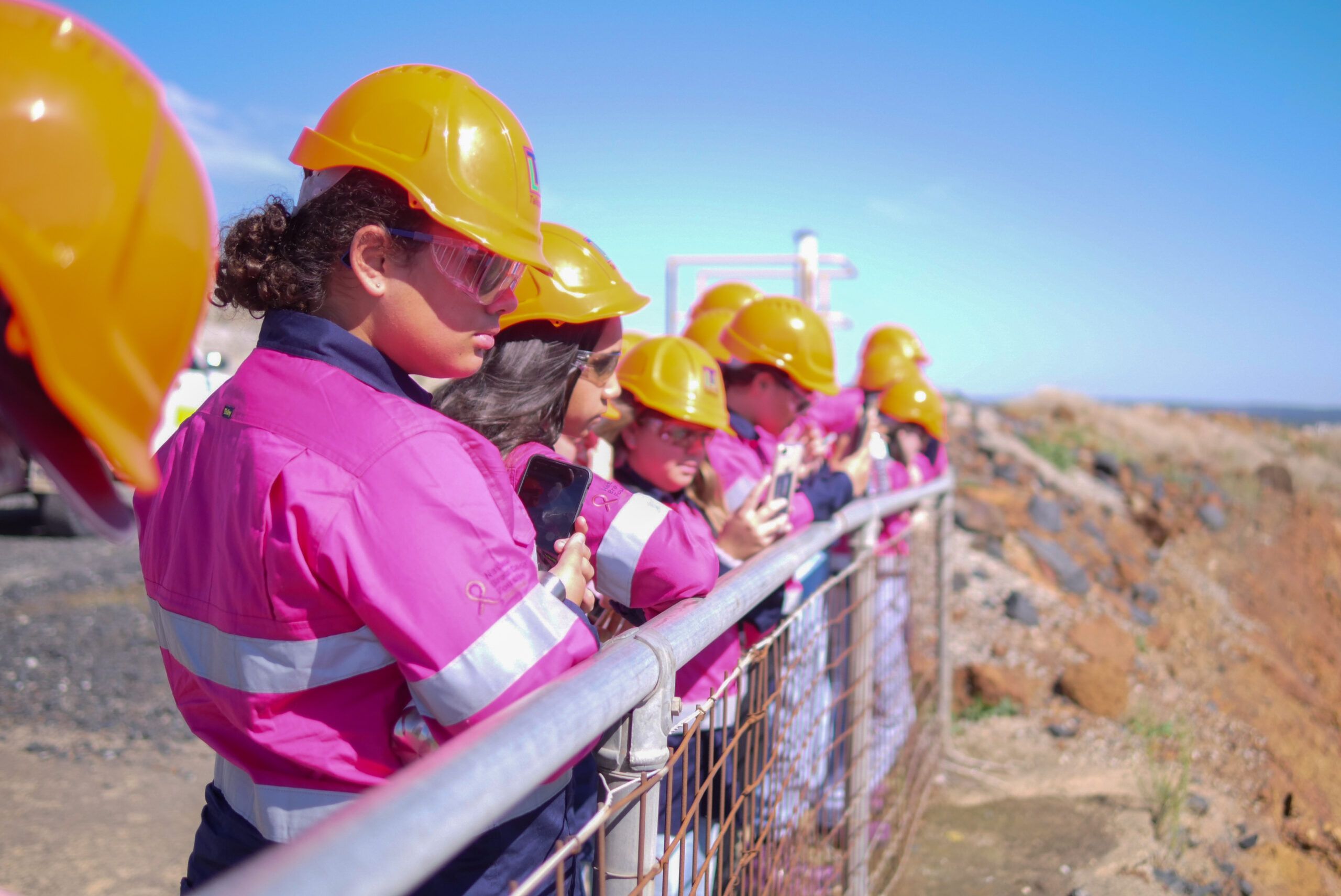
Female participation in the mining industry is welcomed and supported by many.
“The prime thing here is to get Indigenous students educated in mining,’’ he said.
“And it doesn’t have to be as an engineer, there are a broad range of positions that are available in the industry.
“By educating Indigenous boys and girls we are supporting the next generation of mining professionals.”
The road forward
There is no dispute that loss of cultural heritage weakens the heritage of our nation and deeply wounds the Aboriginal and Torres Strait Islander peoples for whom this heritage is sacred.
The WA Aboriginal Cultural Heritage Bill 2021 which replaces outdated Aboriginal cultural heritage laws, is a significant step towards achieving equity in the relationship between Aboriginal people, industry and Government.
However, according to many, this is just the beginning.
For many years traditional owners have longed to have a voice at the decision-making table, and now that the destruction of Juukan Gorge has given them a mic, it is hoped their voices will be heard. This voice will be strengthened and sustained by an increase of Indigenous professionals within the resources industry.
Author | Carmelle Wilkinson
___

